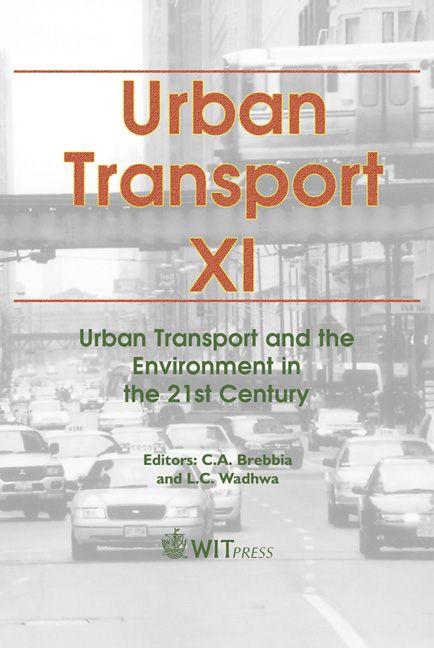The Future Of Intra City Motor Transport In Abuja, The Federal Capital Territory Of Nigeria
Price
Free (open access)
Transaction
Volume
77
Pages
8
Published
2005
Size
430 kb
Paper DOI
10.2495/UT050071
Copyright
WIT Press
Author(s)
U. U. Usani
Abstract
Every human activity that demands movement is predicated on transport. Its supply depicts a fairly rigid framework on which very flexible sub systems depend. Building without speculating for its future expansion is an invitation to chaos for Nigeria, the most populous black nation in the world. Abuja, the federal capital, is only 13 years old. The city CBD is serviced by a grid road network. The zone services commuters from the satellite neighbourhoods located radially within a range of 3–80km. Entry and exit points of the city are basically dual carriageways which receive free and fast flowing traffic from several other dual carriages. Within the city centre, peak periods are characterised by stagnant jams while the linkage access roads observe as many as 60–100 vehicles per minute at any given point. Centroids are used to evaluate travel time and distance which vary from zone to zone. This method is effective in compensating for minor differences in distances travelled by residents within the same neighbourhoods. The bulk of traffic is of car owner status. Origin (source) – destination matrices are established to confirm the volume and direction of flow. The city transport system lacks inter modal integration. It is characterised by physical engineering weaknesses and journey hazards, which increase the cost and time of travel. Absence of mass transit operations account for greater congestion especially at peak hour periods. These occur twice a day. Keywords: framework, rigid, chaos, grid, commuters, satellite, neighbourhoods, radially, centrifugally, centroids, matrix, components, ring road, peripheral.
Keywords
framework, rigid, chaos, grid, commuters, satellite, neighbourhoods, radially, centrifugally, centroids, matrix, components, ring road, peripheral.





